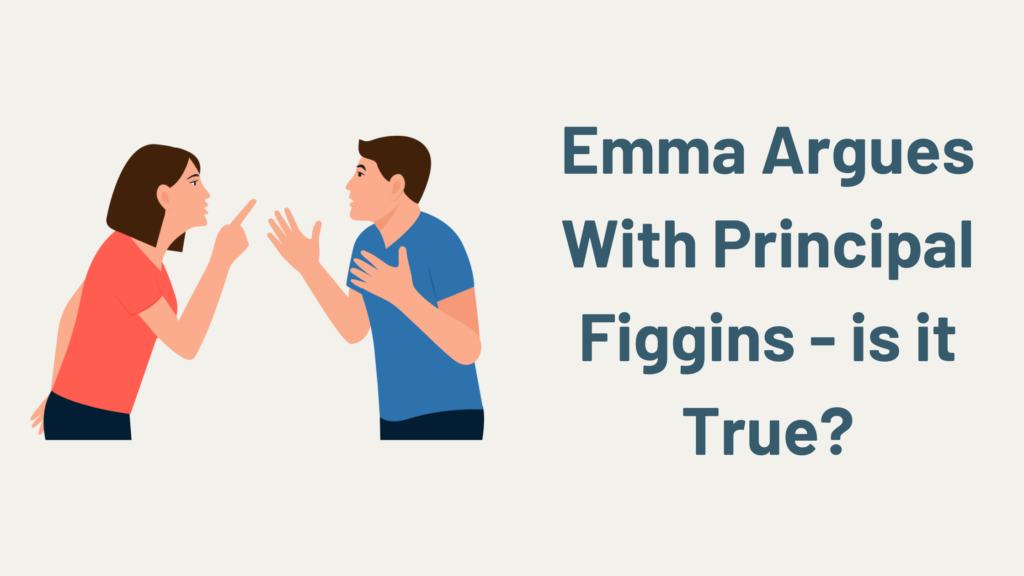Introduction
Emma’s Confrontation with Principal Figgins In the serene halls of Jefferson High School, where order and discipline were the guiding principles, an unexpected storm brewed one fateful Tuesday morning. Emma Thompson, a spirited and outspoken senior, found herself in a heated argument with none other than the stoic figure of authority, Principal Figgins. This clash of personalities shed light on the complexities that arise when students and administrators clash, exploring the delicate balance between discipline and understanding in the world of education.

Setting the Stage
The confrontation unfolded in Principal Figgins’ office, a room that emanated a sense of authority with its dark wooden furniture and stern portraits of past school leaders. Emma, known for her passion for student rights and advocacy, had recently taken issue with a new school policy that restricted students’ freedom to organize events without prior approval.
The Spark
The spark that ignited the confrontation was the cancellation of a student-led charity event. Emma, the driving force behind the initiative, believed that the school administration was stifling the students’ creativity and undermining their ability to make positive contributions to the community. Frustrated and feeling unheard, she requested a meeting with Principal Figgins to express her concerns.

The Clash
As the door to Principal Figgins’ office closed, the clash began. Emma, determined and unyielding, argued passionately for the importance of student autonomy and the need for a more collaborative decision-making process. Principal Figgins, on the other hand, held firm in his belief that rules and regulations were necessary to maintain order and ensure the safety of the student body.
must read=Emma’s Confrontation with Principal Figgins
The Emotional Rollercoaster
The exchange of words between Emma and Principal Figgins ranged from intense to emotional. Emma expressed her frustration at what she perceived as an infringement on students’ rights, while Principal Figgins defended the policies as essential for maintaining a structured learning environment. The emotional intensity of the argument created a palpable tension in the room.
The Power of Communication
Amidst the clash of opinions, a pivotal moment occurred when both parties took a step back to truly listen to each other. Emma articulated her concerns with eloquence, emphasizing the students’ desire to contribute positively to the community. Principal Figgins, in turn, explained the administrative challenges of ensuring the safety and well-being of all students.
Finding Common Ground
As the discussion progressed, Emma and Principal Figgins discovered common ground. They both agreed on the importance of fostering a supportive and inclusive school community. Emma proposed the formation of a student-administration committee that would facilitate better communication and collaboration on school policies. Principal Figgins, recognizing the merit in Emma’s suggestion, agreed to give it serious consideration.

Lessons Learned
The confrontation between Emma and Principal Figgins highlighted the importance of open communication and understanding in educational institutions. It showcased that conflict, when approached constructively, can lead to positive change. Both parties were able to bridge the gap between student autonomy and administrative responsibility, finding a middle ground that benefited the entire school community.
Conclusion
In the aftermath of the heated argument, Emma and Principal Figgins emerged with a newfound respect for each other’s perspectives. The clash had not only brought attention to the need for revisiting certain school policies but also paved the way for a more collaborative and inclusive decision-making process. The story of Emma’s confrontation with Principal Figgins serves as a reminder that, in the realm of education, conflicts can be catalysts for positive change when approached with empathy, understanding, and a commitment to finding common ground.

